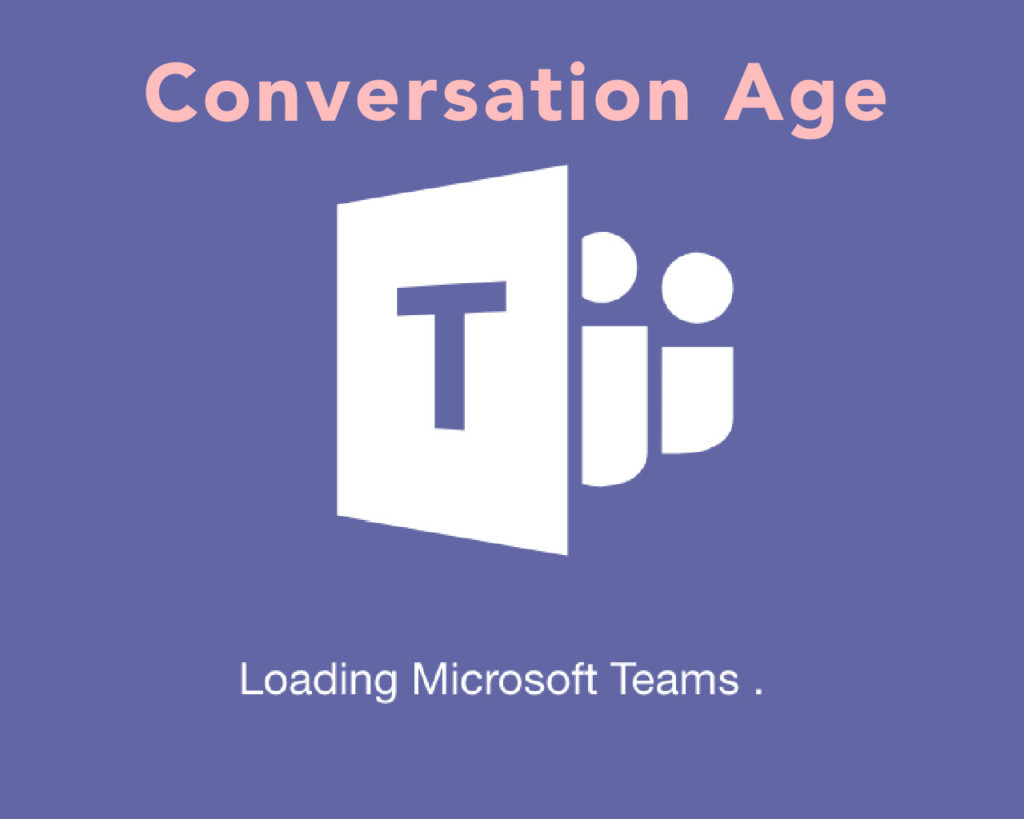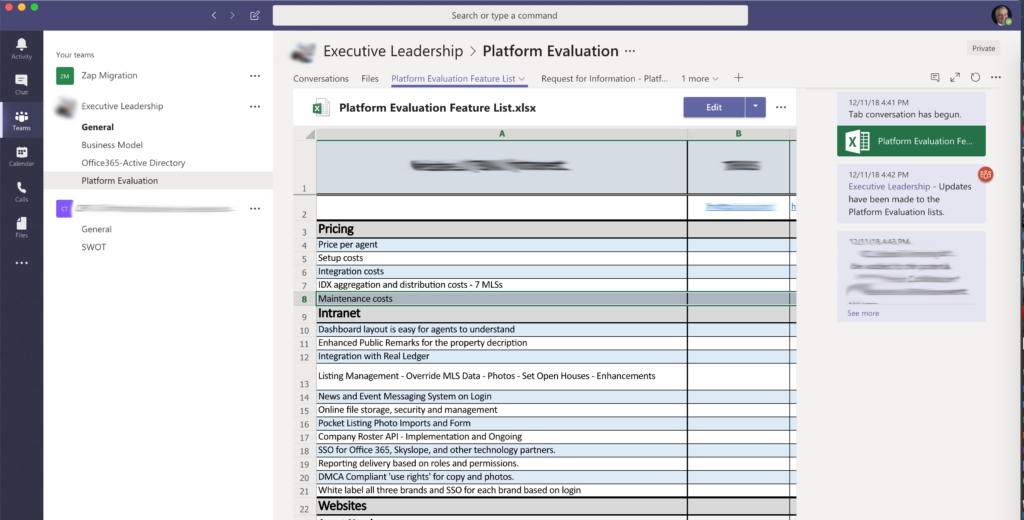For the past couple of years, almost everyone I know is using Slack for team collaboration. It remains a powerful tool with tons of integrations with other applications and platforms.
Slack’s infusion of a new round of funding at $427 million last summer revealed some impressive stats. Slack reported that they had over 8 million daily active users with over 70,000 paid teams.
 Enter Microsoft Teams.
Enter Microsoft Teams.
Microsoft Teams wrangled its way into the collaborative chat market. Below are three ways that Microsoft Teams can make your real estate company more efficient through collaboration and transparency.
A New Beginning for Microsoft Teams
In March 2016, Microsoft was trying to decide if it wanted to acquire Slack for $8 billion. Instead of pursuing Slack, (Bill Gates was against the purchase) Microsoft began releasing Teams to its Office 365 customers in March 2017.
Over the last two years, combing collaboration, productivity, and communication tools in one place became a winning strategy. According to a survey performed by Spiceworks, 21% of the respondents adopted Microsoft Teams as their collaborative chat tool of choice. Slack was in third place (behind Teams) with 15% of respondents embracing the application.
Over the last year, I have been using Teams for my projects. The ability to have quick chats and video meetings, share files, log conversations, and interact with my other tools has improved performance with my tech partners and clients.
Teams helped to solve several challenges, such as:
- Having apps, tools, and services in a single location
- Transparency of activity and conversations between stakeholders and project members
- Having the ability to share files and make real-time edits
- Viewing team members availability
- Having an awareness of a member’s online presence to initiate a chat or video meeting to answer or ask questions
- Creating a culture of information sharing internally and externally
Teams have many use cases, but the following are my top three for real estate companies.
Project Management
The success or failure of managing projects continues to have a tremendous impact on companies. Creating a team for a specific project is an absolute must. You can enroll internal and external members on an as-needed base with Teams.

Teams are not just for tech or marketing projects, but are an excellent tool for business projects. Leave your mind open to the possibilities, such as:
- Opening a new branch office
- Selecting a new MSA or JV mortgage partner
- Mergers and acquisitions (Teams is a very secure environment)
- Company-wide sales meetings
- Re-branding
In the software development world, we use a methodology called Agile. Teams have great hooks into Agile tools, so all the collaboration, status updates, and transparency of the project are in one secure location.
Division and Office Staff Teams
Why not? I have always seen a need for better collaboration within the division and office staff teams. When collaboration takes place between staff members, you will be amazed at the enhanced energy and effectiveness generated with the power of knowledge.
When people have access to conversations within their divisions, there is an empowerment of finding solutions and presenting ideas.
Teams offer a manager the ability to customize the channels and conversation, which is very important in advancing discussions within the organization. Geoffrey James, a contributing editor for INC.com, recently wrote, “if you and your company don’t adapt to the Conversation Age, you can kiss your future goodbye. The big winners in your market–and indeed in every market–will be the first who ‘get it'”.
Microsoft made conversations a central part of their tenant by creating a separate app outside of Office 365. Microsoft Teams is accessible through all devices either by a web browser or through native applications for Windows, MacOS, iOS, and Android. To compete with Slack, Microsoft launched a free version of Teams in July 2018.
Agent Teams
The proliferation of agent teams throughout the industry is evident and isn’t going to go away. Brokerages who do have an Office 365 tenant can help these teams become more profitable and productive. How? By creating retention tools which can make these teams more productive or social.
Why not craft a two-way integration between the tools used by Agents and Microsoft Teams? Tools are great to perform tasks or update a status, but they are poor at holding conversations. Having the ability to perform a task sometimes needs a discussion with other members of a team. Holding instant chat or video conversations is where Microsoft Teams excel.
Agents like to create social gatherings within an organization. Be that organization that is known for fostering a culture that places importance on having a conversation.
Just a few weeks ago, a group of Agents requested a place online where they could socialize and share content. They formed a Spirit Committee for the office. Leveraging Microsoft Teams, they were able to plan activities, set tasks, schedule meetings, and have a dialogue to try to improve the overall health of the office.
Summary
Our society has transformed from being the distributors of the information age to be the communicators of the conversation age. Microsoft Teams and Slack are great tools to have the conversation and build relationships. The core of what our business is all about.
If you are already an Office 365 tenant, let’s brainstorm on how your organization can leverage Microsoft Teams. There is so much more, and we need to open our minds to start having conversations that build relationships within the organization.
Call Victor, Marilyn, or David, and we would love to brainstorm with you.




